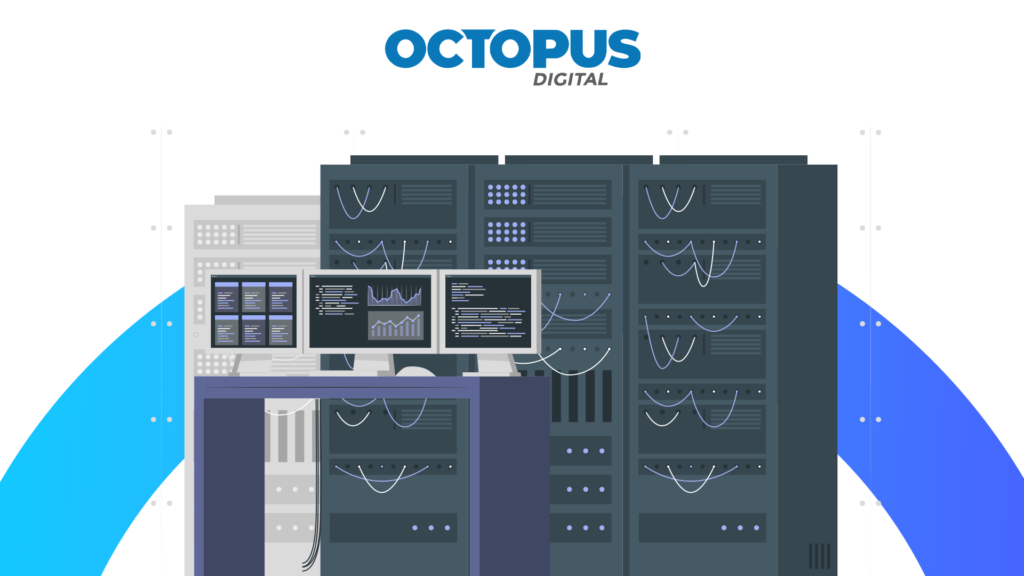Gas and oil costs are skyrocketing, globally and the challenges of reducing greenhouse gases have never been greater. Organizations everywhere need to get a better understanding of energy consumption. For this, the implementation of an EMS (Energy Management System) is the first step to improve their energy management.
To comprehend the significance of EMS, one must get into its fundamental principles and recognize its transformative potential.
Understanding energy management systems
The market size for building energy management systems is forecasted to reach $12.72 billion USD by 2025. At its core, an energy management system is a sophisticated solution that enables organizations to monitor, control, and optimize energy consumption across their operations. It serves as the nerve centre for energy-related data and processes, providing actionable insights to drive informed decision-making.
The core components of an EMS
Monitoring and metering: Energy management systems harness cutting-edge monitoring and metering technologies to track energy usage in real-time. This includes the installation of smart meters, sensors, and IoT devices to track usage patterns at granular levels. This capability enables organizations to gain valuable insights into their energy consumption patterns.
Data analysis: Through sophisticated data analysis techniques such as data mining and predictive analytics, the energy management system identifies trends, patterns, and areas for improvement in energy usage. This analytical prowess facilitates informed decision-making and strategic planning.
Control and automation: Energy management systems facilitate automated control of energy-consuming systems and devices, ensuring optimal performance and efficiency. This includes the implementation of automated scheduling, load shedding, and demand response strategies. By leveraging industrial automation, organizations mitigate energy wastage and enhance operational effectiveness.
Reporting and insights: It generates detailed reports and insights, offering a comprehensive overview of energy consumption metrics. These insights empower organizations to assess performance, identify opportunities for optimization, and track progress towards energy efficiency goals.
The benefits of implementing an energy management system
Cost savings: By optimizing energy consumption and reducing wastage, energy management systems help organizations achieve significant cost savings in utility bills and operational expenses. It leverages strategies like dynamic load management and peak shaving to optimize energy usage, reducing the need for costly grid expansions and lowering grid fees.
Environmental sustainability: Energy management systems play a crucial role in reducing carbon emissions and promoting environmental sustainability. As per Liam McLaughlin, energy systems specialist, UNIDO “Energy efficiency is the fastest, lowest cost and lowest risk approach to reducing greenhouse gas emissions in most organizations”. By minimizing energy waste and adopting renewable energy sources, organizations allay their ecological footprint.
Enhanced efficiency: With precise monitoring and control capabilities, energy management systems enhance the efficiency of energy-consuming processes and equipment, driving operational excellence and sustainability.
Competitiveness in evolving markets: In an era of digitalization and decarbonization, an EMS provides a competitive edge by enabling efficient energy resource management and integration of renewable energy sources. It aligns consumption with sustainability goals and supports the scaling of clean energy projects.
Regulatory compliance: It aids organizations in complying with energy regulations and standards, mitigating risks associated with non-compliance and potential penalties.
Comparing on-premises and cloud-based energy management systems
In the realm of software development, a crucial decision arises: where to host your software? Will you opt for the traditional on-premises data centres or embrace the modern cloud-based solution? While on-premises software has its merits, it often falls short in terms of flexibility, access to advanced technologies, and agility in releasing updates.
Opting for a cloud-based energy management system presents numerous benefits, including cost reduction, scalability, flexibility, and access to cutting-edge technologies. This choice not only unlocks new possibilities for your business but also harnesses the power of modern infrastructure.
How energy management systems work
EMS operates through a systematic process of:
Data collection: EMS collects data from various sources, including sensors, meters, and IoT devices, such as OmniconnectTM, to gather comprehensive insights into energy usage patterns and trends.
Data analysis: The collected data is analysed using advanced algorithms and modelling techniques. This includes identifying energy-saving opportunities, detecting anomalies, and predicting future consumption trends.
Optimization strategies: Based on the analysis, EMS develops and implements optimization strategies tailored to the organization’s specific needs. This may include adjusting equipment settings, optimizing HVAC systems, or implementing energy-saving measures.
Continuous monitoring: EMS continuously monitors energy consumption and performance metrics. This allows organizations to identify issues promptly, track progress towards goals, and adapt strategies as needed.
Challenges and considerations
Organizations considering the implementation of energy management systems are to be mindful of the initial investment. The cost of developing an enterprise energy management system depends primarily on its complexity and features. Therefore, the overall expense varies based on the specific solution required.
While EMS offers long-term cost savings, the initial investment may pose a challenge for some organizations. However, opting for a cloud-based energy management system combats the costliness of a on-premise EMS, posing as a smart investment. Therefore, the potential for substantial returns justifies this investment in the long run
Furthermore, integration complexity may arise while assimilating an energy management system with existing infrastructure and systems. It may require careful planning and execution to ensure seamless integration and optimal performance. Proper training and education of personnel are crucial to maximize the benefits of EMS and to ensure effective utilization across the organization.
Conclusion
Energy management systems represent a powerful tool for organizations seeking to enhance their operational efficiency, reduce costs, and minimize environmental impact. By harnessing the capabilities of EMS, organizations unlock new opportunities for innovation, sustainability, and competitive advantage in today’s rapidly evolving business landscape.
To facilitate this process, the best energy management systems empower organizations to efficiently manage their energy requirements in alignment with their environmental objectives. Therefore, EMS solutions such as OmniconnectTM stand out, enabling productivity and efficiency whilst minimizing your carbon footprint. To learn more about the application of energy management systems, talk to our experts




